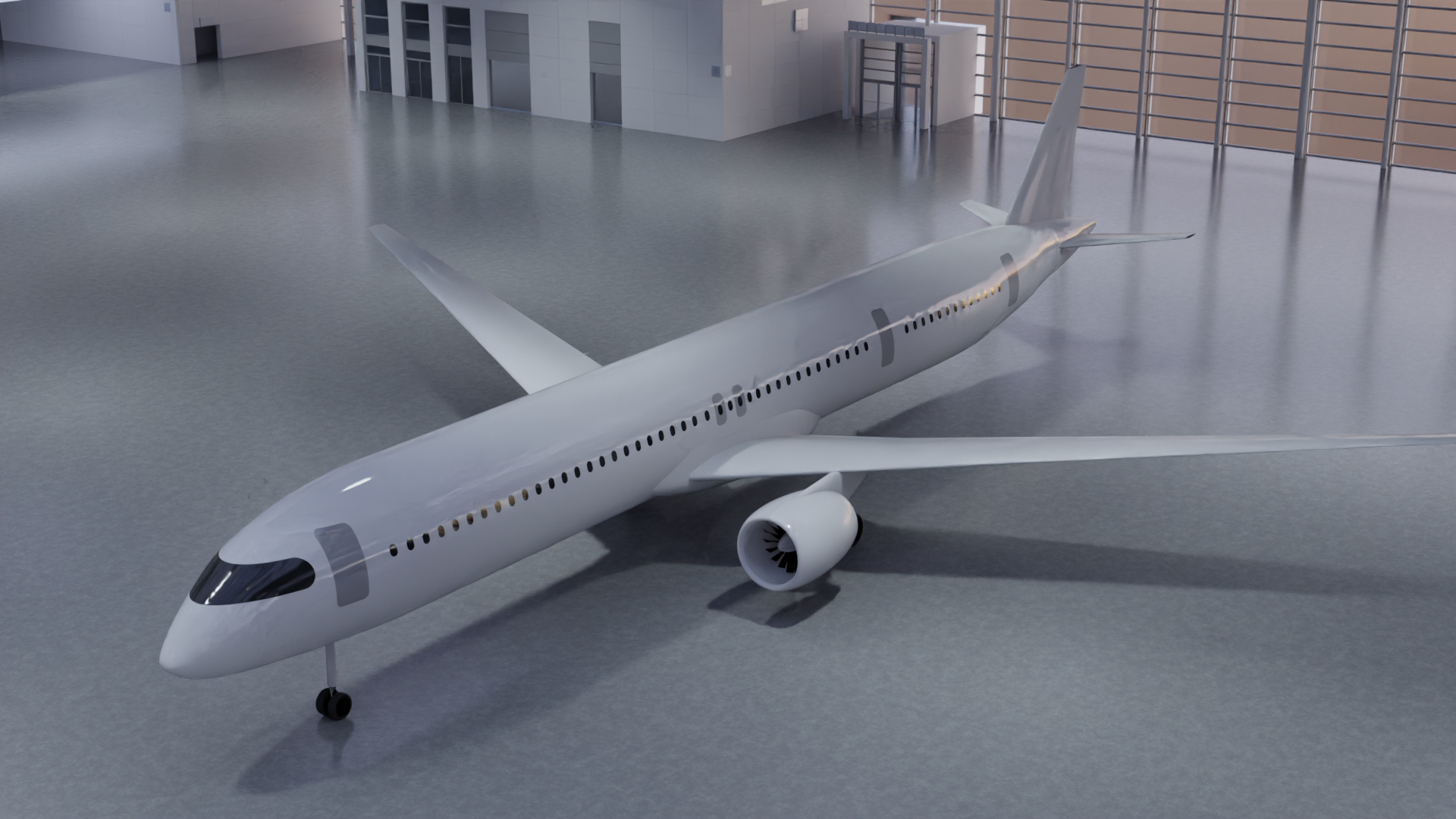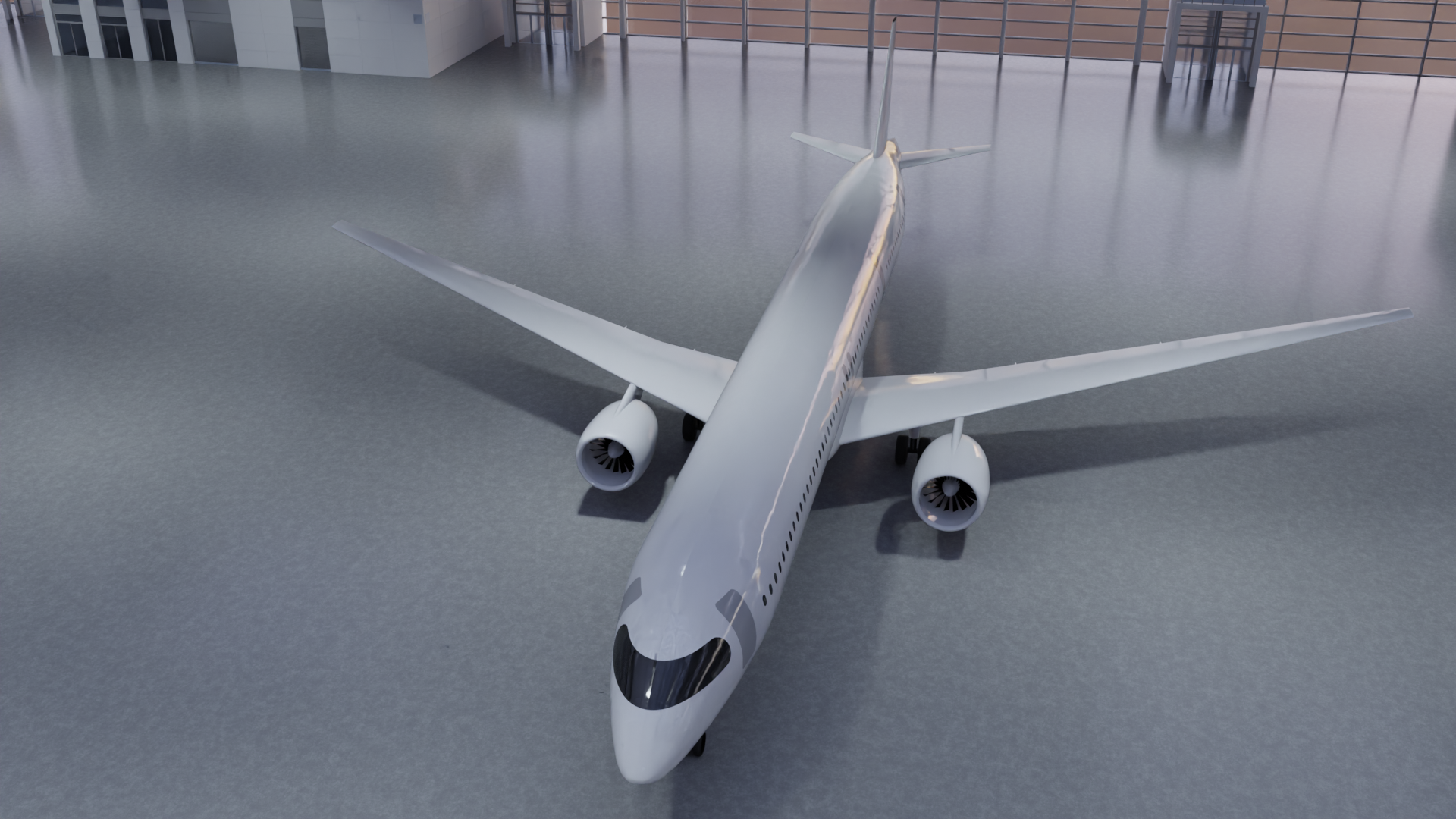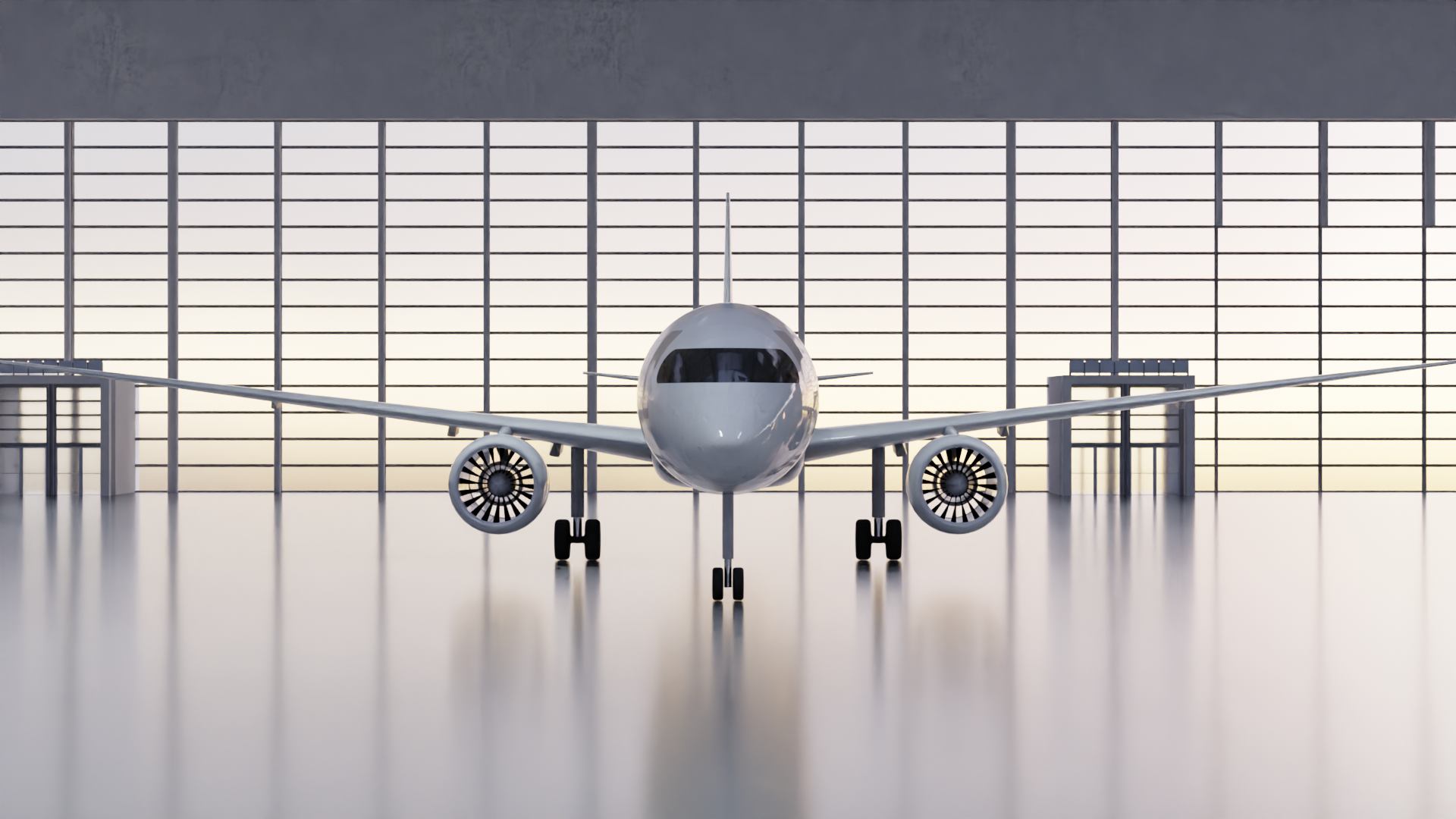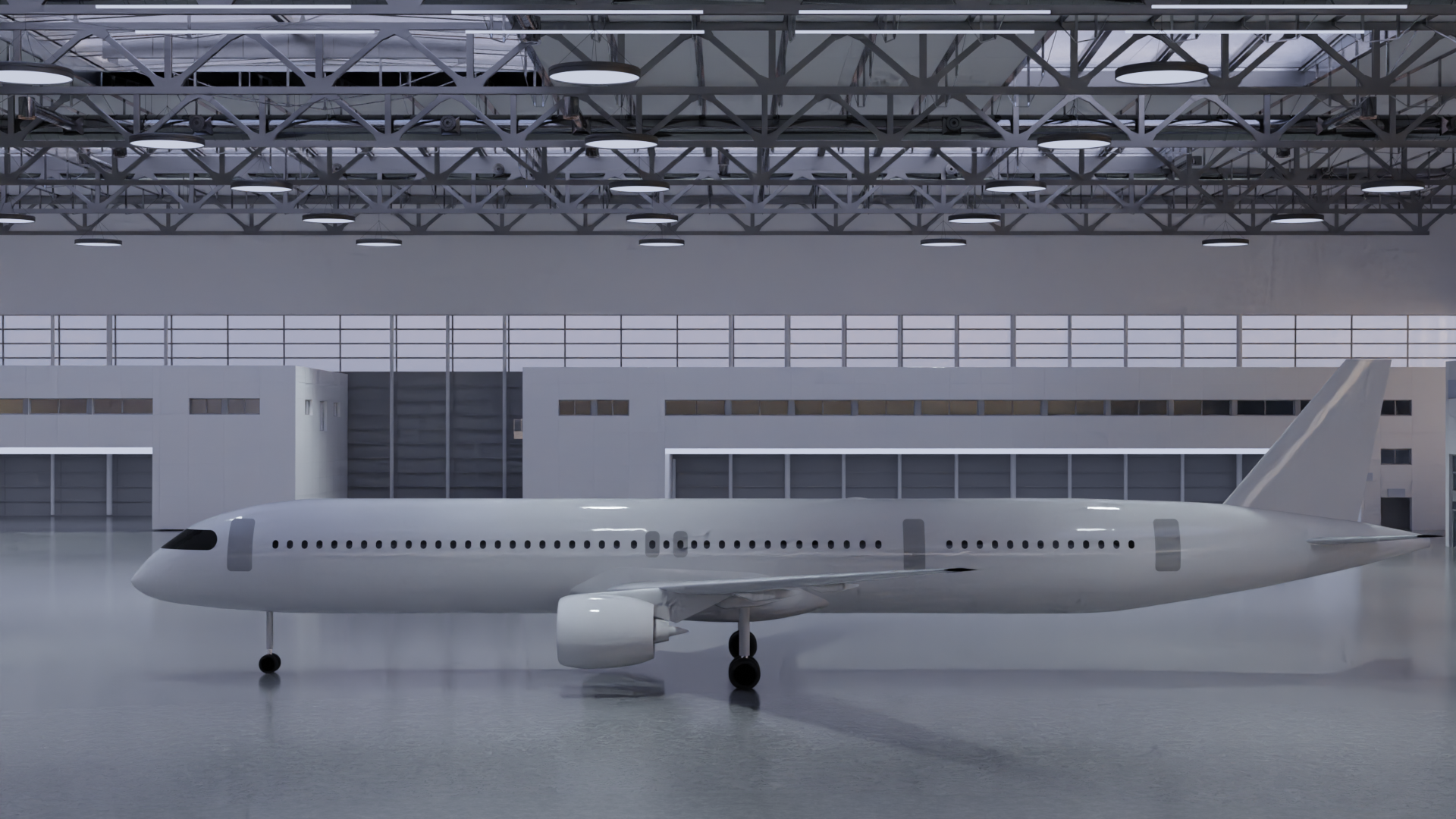Several features set this design apart from current short-haul aircraft. The aircraft is equipped with foldable wingtips, which improve aerodynamic efficiency while allowing the aircraft to still fit within the 36-meter gate limit at airports. The specific wing structure using carbon fibre reinforced polymer (CFRP) reduces the weight of the wing, which helps enhance performance.
It also incorporates an all-electric on-board system architecture, which is more reliable than conventional on-board system architectures and contributes to greater energy efficiency of the aircraft. Additionally, the aircraft uses an ultra-high bypass ratio turbofan engine, which improves fuel efficiency and reduces noise. To save weight and reduce maintenance costs, the turbofan engines have no thrust reverser which is subject to more detailed studies.
These design elements reflect an approach that combines current technologies with potential future improvements to make aviation more efficient and sustainable (both, economically and ecologically).
Project & Partners
The aircraft was designed in the DLR-internal project
EXACT as one of the most promising future aircraft concepts with the potential to reduce climate impact drastically, while being competitive. It was designed to enter into service in 2040.
Outlook
This aircraft concept is primarily intended as a research baseline. For this reason, it uses mainly conventional technologies that do not present major uncertainties. However, some specific technologies, such as the wing folding mechanism and the non-thrust-reversing engines, should be investigated in more detail.







